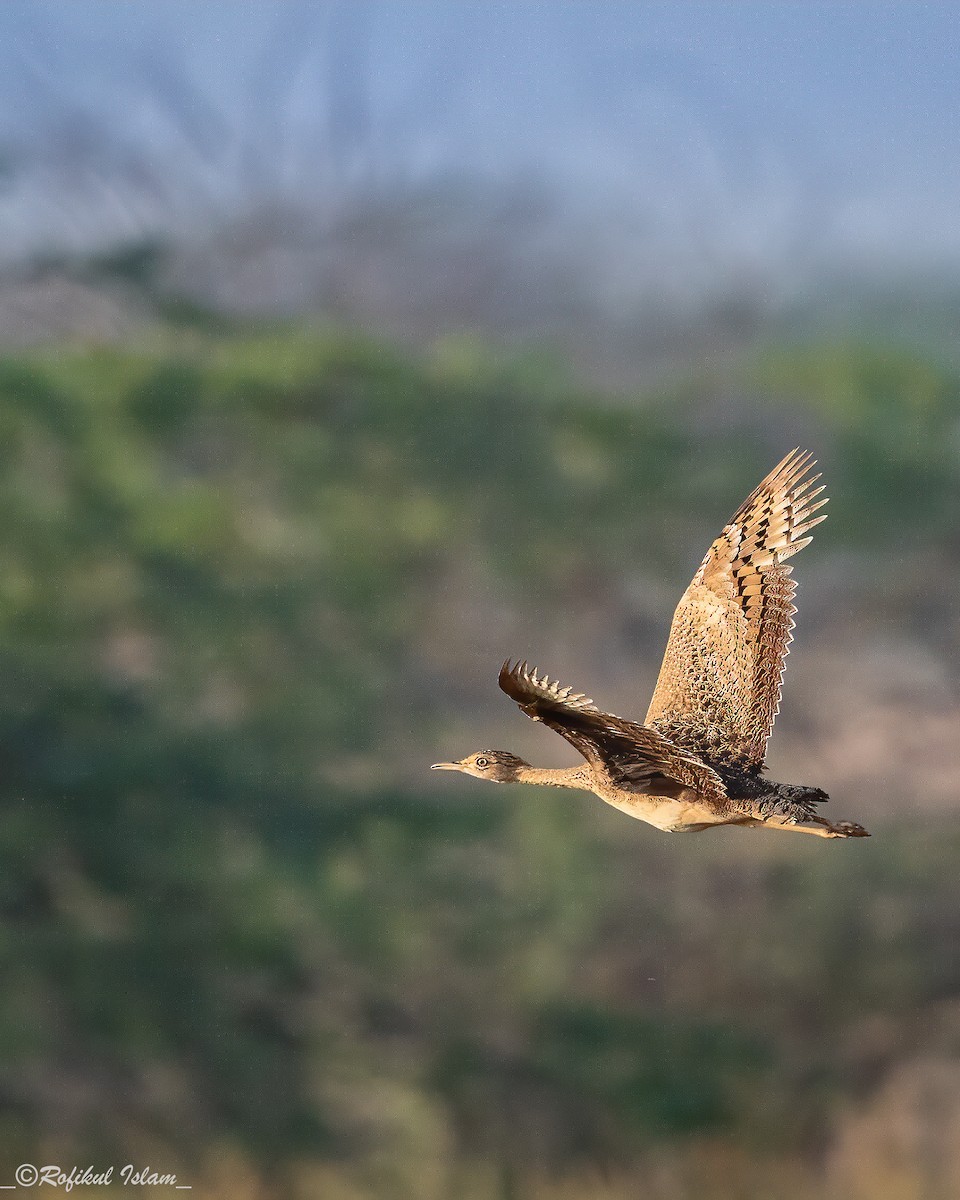Lesser Florican
A species of Lesser Floricans Scientific name : Sypheotides indicus Genus : Lesser Floricans
Lesser Florican, A species of Lesser Floricans
Botanical name: Sypheotides indicus
Genus: Lesser Floricans
Content
Description General Info
 Photo By Rofikul Islam
Photo By Rofikul Islam Description
A male in breeding plumage has a black head, neck and lower parts. However, his throat is white. Around three 4 inch long, ribbon-like feathers arise from behind the ear-coverts on each side of the head and extend backwards, curving up and ending in spatulate tip. The back and scapulars are mottled in white with V shaped marks. The wing coverts are white. After the breedings season, the male tends to have some white in the wing. The female is slightly larger than the male. The females and males in non breeding plumage are buff with black streaks with darker markings on the head and neck. The back is mottled and barred in black. The neck and upper breast are buff with the streaks decreasing towards the belly. The outer primaries of the males are thin and notched on the inner-web. The leg are pale yellow and the iris is yellow. Young birds have a distinct U shaped mark on the neck near the throat. 
Size
46 - 51 cm
Nest Placement
Ground
Feeding Habits
Lesser Florican have a varied diet that includes worms, centipedes, lizards, frogs, locusts, flying ants, and hairy caterpillars. They also consume plant matter such as shoots, seeds, herbs, and berries, particularly foraging in the early mornings or evenings, while new migrants may feed all day.
Habitat
The lesser Florican typically inhabits flat, open grasslands dominated by vegetation such as Sehima nervosum and Chrysopogon fulvus, and can adapt to both small and larger patches. They are also found in scrubland and agricultural fields, especially those cultivating soybean and groundnut. The optimal habitat consists of a mosaic of protected grassland areas and traditional croplands, although their grassland habitats are increasingly diminishing.
Dite type
Herbivorous
General Info
Feeding Habits
Bird food type
Behavior
These bustards are found either singly or in pairs in thick grassland or sometimes in crop fields. Indigenous tribal hunters regularly shot the males during the breeding season, as they were easy to spot because of their courtship display. It was said to be good for eating but considered inferior to the meat of the Bengal florican. They fly faster than other bustards and give a duck-like impression in flight. 
Distribution Area
The species was formerly more widespread across much of the Republic of India but not in Sri Lanka. It breeds mainly in the central and western parts of India. Historic records exist from the Makran coast of Balochistan province in Pakistan. A record from Burma has been questioned. The species is said to move in response to rainfall and their presence at locations can be erratic, with sudden large numbers in some seasons. About 500 males in Gujarat were ringed and nearly 18 were recovered, most of them within about 50 kilometres of their ringing sites. The preferred habitat is grasslands but it sometimes occurs in fields such as those of cotton and lentils. Breeding areas are today restricted mainly to Gujarat, Madhya Pradesh, some areas in southern Nepal and parts of Andhra Pradesh. Managing florican habitats as grassland interspersed with croplands and pastures spared rotationally provided optimal results at low production-level. 

 Photo By Rofikul Islam
Photo By Rofikul Islam Scientific Classification
Phylum
Chordates Class
Birds Order
Bustards Family
Bustards Genus
Lesser Floricans Species
Lesser Florican